The impact that blocking has on offensive performance cannot be overstated. Over a decade of research I've done in measuring run blocking indicates that ball carriers are four to five times more productive on plays with good run blocking versus plays with bad run blocking. The passing game also displays a huge disparity, as quarterbacks are roughly three times as productive on a yards-per-dropback basis with a clean pass pocket as they are on dropbacks when pass-rush pressure is impacting the pocket.
Since we're now at roughly the one-third mark of the 2017 NFL season, it's a good time to take a look at how every NFL team's blocking wall (a term that includes anyone who blocks on a play) grades out at this time.
The details of the grading system can be found here, with the nutshell explanation being that it uses a wide variety of advanced blocking metrics to come up with an A-F grade for every platoon.
Now that we have the preliminaries out of the way, let's take a look at the top five and bottom five blocking walls, predict if those blocking paces will continue, and review some interesting metrics being posted by a couple of AFC playoff contenders.
Top five offensive blocking walls

1. Los Angeles Rams
Grade: A
Head coach Sean McVay deserves a lot of credit for his highly creative playcalling, but a big part of why those plays are succeeding is the elite performance of the Rams' blockers. They rank tied for first in my good blocking rate (GBR) metric that measures run-blocking consistency, as they are giving their ball carriers quality run blocking on 50.4 percent of planned rushing plays. This group is nearly as adept in pass blocking, as the 2.5 seconds average time in pocket (TIP) they are giving Jared Goff on pass plays is a league-leading rate.
Outlook: The Rams have placed first or second in GBR every week this season, but that could change given that three of their next four matchups (Arizona, Houston and Minnesota) all have front sevens that have a B or higher grade in my front-seven grading system.
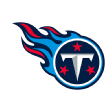
2. Tennessee Titans
Grade: A
The Titans' offense hasn't hit on all cylinders this year due to Marcus Mariota's hamstring injury, but their blocking is still every bit as good as last season. Tennessee ranks fourth in rushing yards gained per carry before first defensive contact (YBCT) with a 2.7-yard average. Add that to the Titans being tied with the Rams for the league lead in GBR (50.4), and it shows why this platoon rates among the best in the NFL.
Outlook: The Ravens' woeful run defense is on the docket in Week 8, but after that it gets more challenging, with matchups against the Bengals and Steelers. Those teams have front sevens that rank among the top five in my front-seven grading system.

3. New Orleans Saints
Grade: A-
This group is understandably known for its superb pass blocking, as the Saints rank third in ESPN Stats & Information's pass pressure rate (PPR) allowed metric (15.7), but let's not sell them short on their run-blocking prowess. New Orleans ranks fourth in GBR (45.7) and rates seventh in my good blocking productivity (GBP) metric that measures overall rushing production (3.5).
Outlook: Three of the Saints' next four foes rank in the bottom half of the league in my defensive front-seven grades, so New Orleans should be able to keep this pace going for at least the next month.

4. Pittsburgh Steelers
Grade: A-
Ben Roethlisberger may be wondering if he still "has it," but there is no doubt that his blockers still have it. The Steelers rank tied for first in PPR (15.2), second in quarterback contact (QC) percentage (5.5) and third in GBR (46.0).
Outlook: The Bengals' front seven rates out as an A-minus group, so Pittsburgh could have its hands full in Week 7, but matchups against Detroit, Indianapolis and Tennessee in the following weeks are much more favorable and should present little problem for the Steelers.

5. Atlanta Falcons
Grade: A-
The Falcons made an offseason trade-off of one of the best pass playcallers in the NFL (Kyle Shanahan) for one of the best run playcallers (Steve Sarkisian). That change of mindset has shown up in Atlanta's blocking metrics, as the Falcons rate well in PPR (23.1, ranked 10th) and QC (7.0, ranked fifth), but dominate in my good blocking yards per attempt (GBYPA) metric that measures per-carry production on rush plays with quality run blocking. Atlanta's 9.3 GBYPA ranks second in the NFL, and leads to a 3.8 GBP that ranks third.
Outlook: Matchups against the Patriots and Jets, teams that rank last and 21st, respectively, in my front-seven grading system, could allow Atlanta to challenge for the top overall blocking wall spot by the end of Week 8.
Bottom five offensive blocking walls
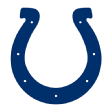
32. Indianapolis Colts
Grade: F
Frank Gore gets a lot of blame for the Colts' rushing woes, but it's difficult for any running back to gain yards behind a blocking wall that ranks 30th in GBR (35.1), 28th in GBP (2.7) and 28th in YBCT (1.6). The Colts are also wise to make sure Andrew Luck is fully healthy before his return, as he could have more than his share of pass-rush trouble given that Indianapolis rates 30th in PPR (38.0) and 31st in QC (21.5).
Outlook: For those thinking that Luck returning to the lineup could turn this situation around, think again. The Colts' next four games are against Jacksonville, Cincinnati, Houston and Pittsburgh. The Jaguars' abysmal rush defense may give Indianapolis' run blocking a breather in Week 7, but the Steelers and Bengals rate among the top five defensive front sevens, and Houston is still in the upper half of the league's front sevens, despite losing J.J. Watt and Whitney Mercilus.

31. Cincinnati Bengals
Grade: F
Cincinnati's pass blocking has left a lot to be desired this year, as the Bengals rank 21st in QC (13.0) and 30th in TIP (2.1), but run blocking is where this team has really struggled. Cincinnati is last in YBCT (1.4) and 31st in GBP (2.5).
Outlook: The Bengals are trending in the wrong direction in run blocking, as they have seen their GBR drop from a 45.7 percent pace after Week 2 (ranked seventh at that time) to a 38.2 percent pace after Week 6 (ranked 22nd). The Week 7 matchup against Pittsburgh won't help matters, but the games against Indianapolis, Jacksonville and Tennessee, all of whom rate as a C-plus or worse in my rush defense grades, could allow Cincinnati to start trending back upward.
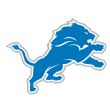
30. Detroit Lions
Grade: D-
Offensive line injuries have caused the Lions to post many subpar blocking metrics, including a No. 30 rank in sack rate (9.0) and placing 25th in GBR (37.6).
Outlook: Things could improve a bit for Detroit if guard T.J. Lang returns from his ankle injury. The problem for the Lions is they face a tough pass-rush group in Pittsburgh in Week 8, a stout Cleveland rush defense in Week 10 and a solid rush defense in Chicago in Week 11.
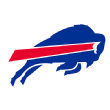
29. Buffalo Bills
Grade: D-
The Bills have posted a GBYPA of less than 6 yards in every game except the season opener, which is why Buffalo ranks 30th in GBYPA (6.4) and 30th in GBP (2.6). The pass blocking isn't any better, as Buffalo rates 31st in PPR (40.0) and last in QC (25.0).
Outlook: The Bills' matchup against Tampa Bay in Week 7 isn't a positive, as the Buccaneers ranked second in GBR allowed going into Week 6. Matters improve after that, as contests against Oakland, the New York Jets, New Orleans and the Los Angeles Chargers, all of whom have front sevens with a C or lower rush defense grade, should help move the GBYPA total well above the 6-yard mark.
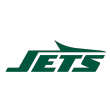
28. New York Jets
Grade: D-
It won't be a surprise if the Jets end the season ranked as the worst offensive blocking wall, as this group has almost nothing to hang its hat on. New York rates 26th in PPR (31.2), 27th in sack rate (8.7), 25th in TIP (2.2) and dead last in GBR (30.9). The top QB prospects in the upcoming draft class should hope that the Jets keep winning in spite of this blocking debacle, as any QB's career would almost certainly get off to a bad start playing behind this group.
Outlook: The Jets' rushing game isn't about to see any improvement, as Miami, Tampa Bay and Buffalo, three of their next four foes, all rate as an A-minus or better in my rush defense grades.
Keep an eye on these blocking walls

Houston Texans
Grade: C
Deshaun Watson has the inside track for Offensive Rookie of the Year honors despite Houston's blocking wall ranking last in PPR (42.1) and 28th in QC (19.6). Their problems in this area are not blitz-related, as the Texans rank 18th in PPR on blitz plays (38.4) and last in PPR on non-blitz plays (43.9). Some of that could have to do with Watson holding the ball too long, as Houston ranks 31st in time before pass on non-blitz plays (3.1), a pace that includes a 2.9 seconds per play average on short passes (aerials thrown 10 or fewer yards downfield). If coach Bill O'Brien can help Watson make faster reads and get the ball out quicker, it's possible Watson could play even better down the stretch.
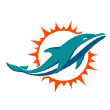
Miami Dolphins
Grade: D-
The Dolphins were easily the worst run-blocking group after Week 4, as their 23.0 percent GBR ranked last and made them the only team with a GBR of lower than 30 percent. The past two weeks finally saw Miami work the early season rust out, as the Dolphins have posted a 44.8 percent GBR in the past two games. If that trend continues, coach Adam Gase should finally be able to operate the game plan that worked so well in 2016, and keep the Dolphins in the playoff hunt.
Grades for all 32 teams
Here are the run-blocking, pass-blocking and overall grades for all 32 teams to this point of the season:
